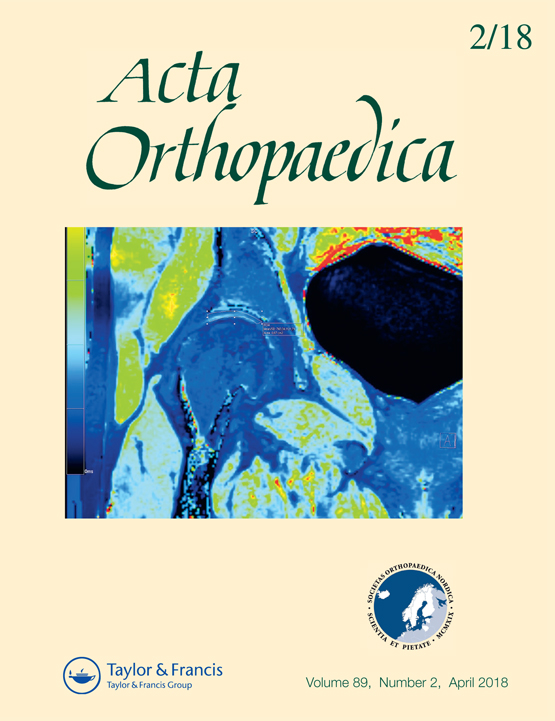Cemented total hip replacement in patients under 55 years
DOI:
https://doi.org/10.1080/17453674.2018.1427320Abstract
Background and purpose — About 86,000 total hip replacements (THR) have been registered in patients under 55 years in the National Joint Registry of England and Wales (NJR). The use of uncemented implants has increased, despite their outcomes not having been proven to be significantly better than cemented implants in this registry. We determined the implant survivorship and functional outcomes of cemented THR in patients under 55 years at a minimum follow-up of 22 years. Patients and methods — 104 hips in 100 patients were included in this prospective study. Functional outcome was assessed using the Harris Hip Score and radiographs were assessed for implant failure and “at risk” of failure. Kaplan–Meier survivorship analysis was performed. Results — 89% of hips showed good to excellent results at final follow-up with a mean Harris Hip Score of 88 at a mean follow-up of 25 years. Revision was performed in 3/104 hips. 14 acetabular components and 4 femoral components were “at risk” of failure. The survivorship at minimum 22 years with revision for any reason as the end-point was 97% (95% CI 95–98). Interpretation — Cemented hip replacements perform well in young patients with good long-term functional and radiographic outcomes.Downloads
Download data is not yet available.
Downloads
Published
2018-03-04
How to Cite
Kiran, M., Johnston, L. R., Sripada, S., Mcleod, G. G., & Jariwala, A. C. (2018). Cemented total hip replacement in patients under 55 years. Acta Orthopaedica, 89(2), 152–155. https://doi.org/10.1080/17453674.2018.1427320
Issue
Section
Articles
License
Copyright (c) 2018 Manish Kiran, Linda R Johnston, Sankar Sripada, Gordon G Mcleod, Arpit C Jariwala

This work is licensed under a Creative Commons Attribution-NonCommercial 3.0 Unported License.
Acta Orthopaedica (Scandinavica) content is available freely online as from volume 1, 1930. The journal owner owns the copyright for all material published until volume 80, 2009. As of June 2009, the journal has however been published fully Open Access, meaning the authors retain copyright to their work. As of June 2009, articles have been published under CC-BY-NC or CC-BY licenses, unless otherwise specified.







